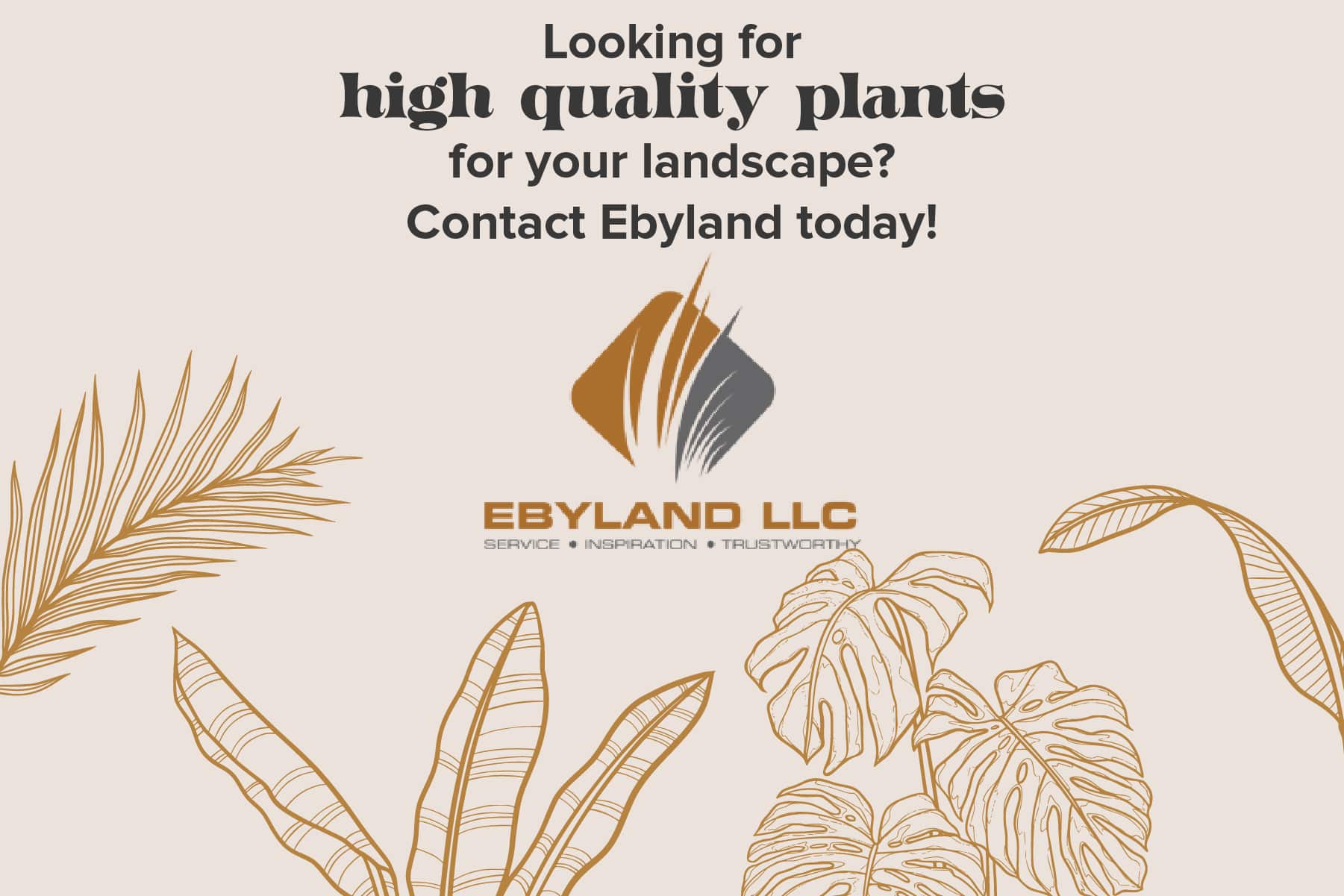The Ultimate Guide To Designing A Beautiful Backyard (plus 6 popular garden styles for inspiration)
Have you spent time drooling over the beautiful yards on sites like Pinterest or magazines like Fine Gardening or Garden Design?
Often, homeowners dream of having a magazine-worthy backyard, but when it comes to starting on it, they are daunted by how complex the project actually is.
Here at Ebyland, we understand that struggle. That's why we wrote this article, which will help you answer questions such as:
- What kind of plants, flowers, and shrubs look good together?
- How can you create a cohesive landscape design and avoid simply planting greenery in random pockets around the yard?
- Is creating a beautiful yard even possible without breaking the bank?
Why waste another minute? Let's dig in and get started!
Benefits Of Planting Trees And Other Plants
Is investing in trees, shrubs, flowers, and other greenery worthwhile? Or is that money you are spending on plants all wasted?
The answer: it’s a good investment in numerous ways.
But why?
Let’s take a look!
1 - Increased Property Value
Mature trees and other plants are proven to increase property value.
In fact, a well-landscaped home has a significant price increase over a home with no landscaping. This advantage ranges from a 5.5%-12.7% increase in value depending on the type of landscaping.

Wondering what that might look like in real life?
A 12% increase on a $200,000 home is $24,000. Not bad, right?
2 - Added Beauty
Most homeowners are going for a little added beauty when they add plants to their properties.
And nobody can deny that nature is astoundingly beautiful!
Whether it's the majesty of a tree, the delicate beauty of a flower, or the stately form added by a shrub, plants are guaranteed to make your property more beautiful.
3 - Mental Health Benefits
Did you ever wonder why cities plant trees along sidewalks, avenues, and parks?
It's because trees boost our mental health. The health benefits we can gain from trees extend far beyond that. Trees also offer:
- A boost to immune systems
- Lower blood pressure
- Reduced stress
- An increase in energy
- The ability to sleep better
- increased focus
There's a good chance you've experienced some of these things firsthand. It's why we want to escape to nature when we are sad or why a stroll through the woods makes us feel so alive. Maybe it's chemical action, perhaps just the beauty that refreshes our souls--but there's no denying that trees and nature give us a boost!
Whatever the case, it makes sense to surround yourself with trees and other plants.
4 - Increased Privacy
Privacy is a big deal—especially if you live in an urban setting surrounded by other homes.
And here's the thing:
A fence can provide privacy but also acts as separation and a signal of hostility. In short, it's not very neighborly. In one of his poems, Robert Frost states cynically, "good fences make good neighbors." But not everybody appreciates that attitude!
On the other hand, a row of trees or shrubs acts as a friendlier barrier and benefits both yards with added beauty.

5 - Birds And Wildlife
Plants are an excellent resource for your backyard if you enjoy nature, especially birdwatching. Birds and other small wildlife are attracted to plants in almost any environment.
Some birds, squirrels, and other guests, such as butterflies, will make your backyard a much more interesting and lively place!
6 - Erosion Control
The effects of soil erosion go beyond the loss of fertile land. Erosion also leads to pollution and sedimentation in streams and rivers, clogging these waterways and causing a decline in fish and other species.
Also, degraded lands are less able to hold onto water, which can worsen flooding in that area.
Plants prevent erosion by reducing runoff and holding soil particles in place with their roots.
That’s why planting seeds is important, especially on sloping areas or hillsides.

7 - Environmental benefits
Today’s pollution and waste are hurting our environment.
Humans should try to improve and preserve the earth, not harm it. One tree in your backyard may not seem like a huge difference, but growing plants is one of the best ways to improve the earth. And every little step counts!
Here’s just a beginning list of ways plants help us and the environment:
- Plants produce oxygen and absorb carbon dioxide. This maintains the atmosphere - which is absolutely critical to our survival.
- Plants feed us.
- Plants regulate and stabilize the water cycle by releasing moisture into the air.
- Plants improve soil stability - preventing landslides and floods.
- Plants reduce energy costs by providing shade.
Growing plants on your property is a great idea. If you aren’t sure how to plant something, you might want to read our blog: How To Plant A Tree Or Shrub - The Ultimate Guide.
In the meantime, let’s get on to how you can make all the plants on your property look fabulous!
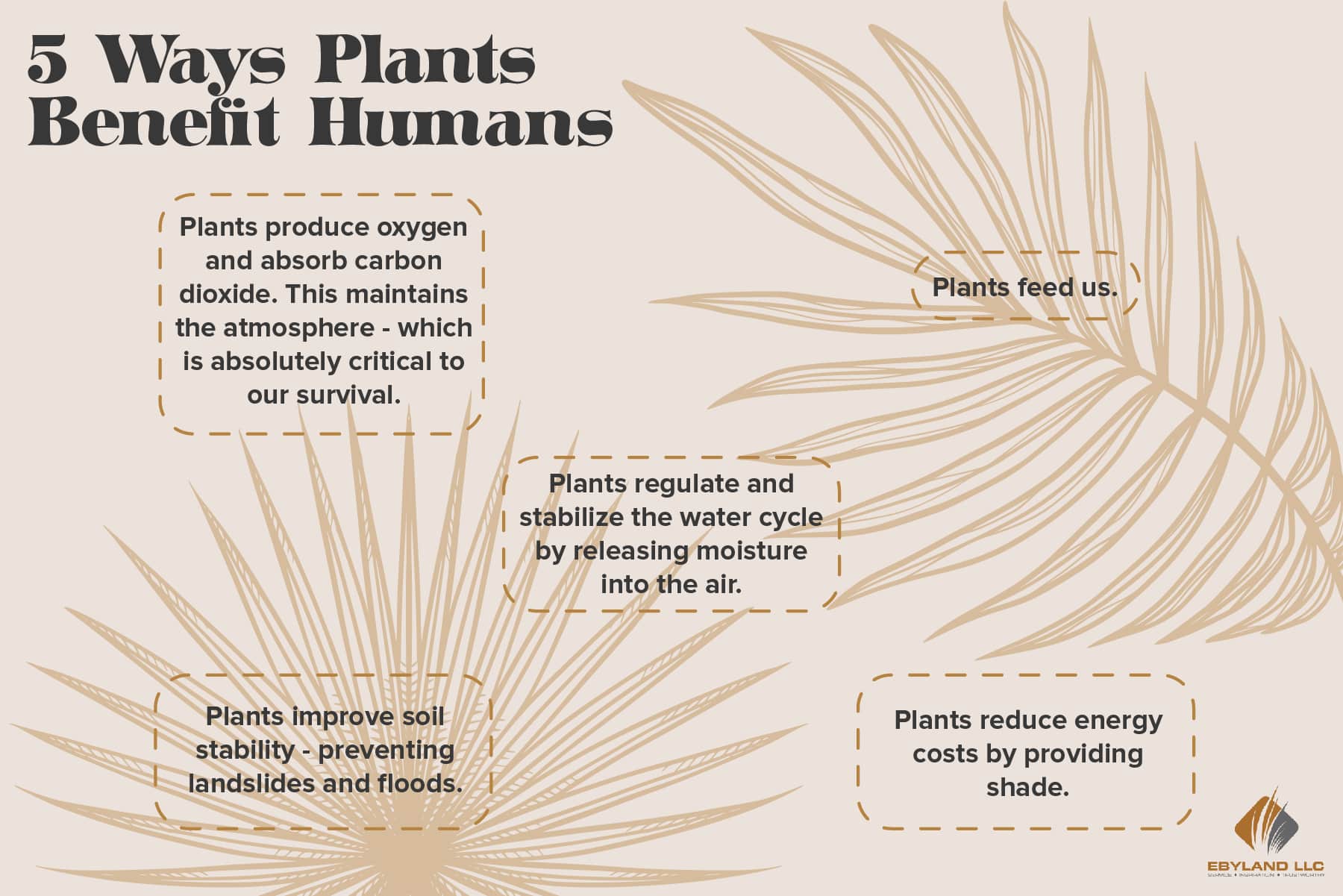
How To Design A Beautiful Backyard
Everyone wants a beautifully landscaped yard and garden, but most people don't want to spend the money it would take to hire a professional landscape designer.
That's why we've compiled these simple tips that you can put to work in your yard, flowerbed, or garden to create a phenomenal panorama.
Understanding Garden Styles
The very first thing you must do when planning your landscape design is deciding what kind of garden you want.
The definition of a garden is "A planned space set aside for the display, cultivation, or enjoyment of plants and other forms of nature."
In other words, when we say "choose a garden style," we are saying you need to choose what landscape style you want.
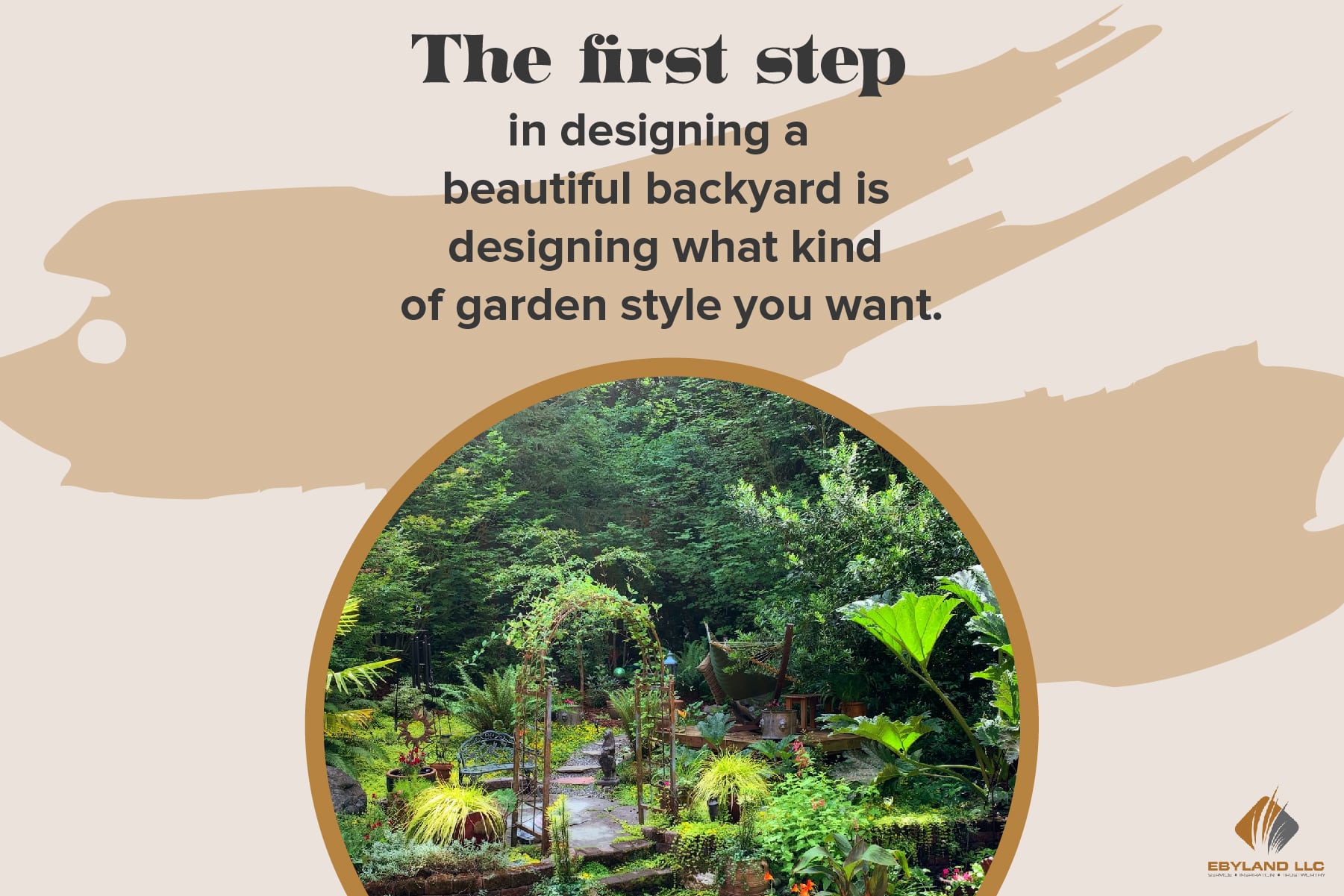
Traditionally there are two styles of gardens:
Formal gardens use distinct geometric shapes: circles, rectangles, triangles, or long straight lines. Plant spacing, color, and layout are all exact. Think manicured, formal, and clean.
Most people think of old estates when they think of formal gardens, but you can easily make a formal garden right in your backyard.
Need some inspiration? Here are a few formal garden ideas.
Informal gardens tend to use curves and free-flowing forms. The color combinations are more relaxed, and varying plant heights will mingle together. These gardens are natural and wild.
Think of a country cottage or wildflower meadow. They look a bit bushy and natural looking.
Most home landscape designs follow the informal garden blueprint - and that's ok. Informal gardens are much easier to design, so if you're a beginner, we definitely recommend starting with an informal landscape style.
Note: Whether your gardens are formal or informal, they'll benefit from mulch, which is why we wrote a guide to mulch that will tell you everything you need to know about this gardening supply.
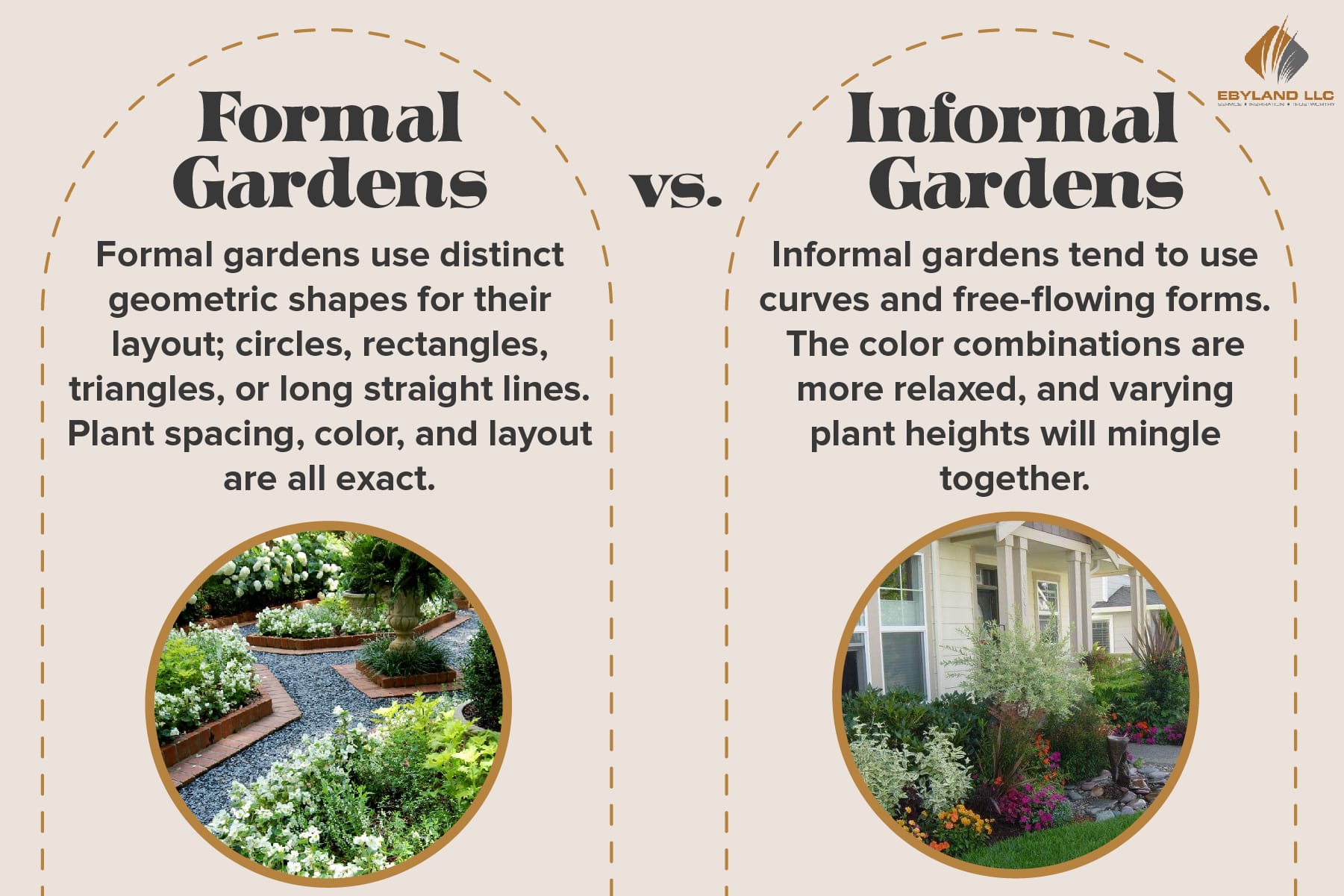
Understanding Flower Bed Styles
Once you know what kind of garden or yard you want, you can plan specific flower beds.
Flower beds are also split into two distinct styles:
- Border Flower Beds
- Island Flower Beds
Border flower beds are true to their name. They are defined and anchored by a backdrop—something like a porch, fence, house wall, or hedgerow. They border the backdrop.
These flower beds are most often long and narrow. Just remember that the width of a border flower bed should increase proportionately with its length. For example, a bed that is eight feet long might be 3 feet wide - but a bed that is 100 feet long should be at least twelve feet wide.
We suggest beginning with border flower beds if you're just starting to landscape your home. They usually fit in natural spaces, and it's easy to visualize them. Once you've completed your border beds, you can move on to island flower beds, which are slightly more challenging to pull off.
When you are planning and implementing your border flower beds, remember these tips:
- Keep tall plants in the back, medium-sized plants in the middle, and short plants in the front of the bed.
- Do not block windows with tall plants if you are planting by a house.
- Group the plants in numbers of 3-4 for a natural feel.
- Plant your flowers or shrubs in bunches - not in a row.
- Plants several kinds of one shrub or flower together for more of a visual impact. One type of plant by itself tends to look sparse. This also creates some nice contrast in your flower bed.

Island flower beds are not anchored by a backdrop, so you can see them from all sides.
These flower beds are rarely long and skinny - rather, they are usually square, round, or amorphous in shape.
Island flower beds can be difficult to visualize and properly size since they stand by themselves, so give yourself some experience with border beds before tackling them. Once you’ve worked with your property for a while, you will probably start getting more and more ideas for island beds.
When you do start planting island flower beds, keep these tips in mind:
- Choose an anchor point for the bed - this could be a tall or showy shrub or something like a bench or birdbath.
- Plant the tallest plants in the middle of the bed and plant short plants toward the edge of the bed
- Like border beds, plant several flowers together in one group for a full, lush look.
- Use several types of flowering plants, like long-living perennials, short-term (but long-blooming) annuals, seasonal bulbs, and ornamental grasses.
Most well-designed yards include both border and island flower beds. However, you may have to choose one or the other if you are limited by space.
If you’re not sure what you want, start with a border flower bed. Island flower beds can easily seem out of place or like they are “floating,” - especially in yards that don’t have much landscaping. You don't want one lonely flower bed right out in the middle of your yard!

Creating Your Flower Beds
Ok, you’ve chosen which style of landscaping you want and thought about implementing both border and island flower beds.
Now, the fun part--it’s time to get outside and get your hands dirty.
But don’t start digging too soon!
Before you break the sod, you have some planning to do.
- Head outside and decide where you want your flower beds. Here are some things to consider:
- How much sun and shade does the area receive?
- Are the beds at a place where you will be able to see and enjoy them?
- Will the beds affect other activities on your property?
- Now it’s time to determine the size and shape of your beds. Use a rope or garden hose to visualize exactly what shape and size the flower beds will take.
- Choose a focal point for each bed or portion of the lawn. This could be a boxwood shrub in each corner of a flower bed or a tall, flowering plant in the middle.
Now, all you have to do is find the right plants to fill in your beds and yard!
Buying The Right Plants
Your best-laid plans fall apart when you don’t buy the right plants for your property.
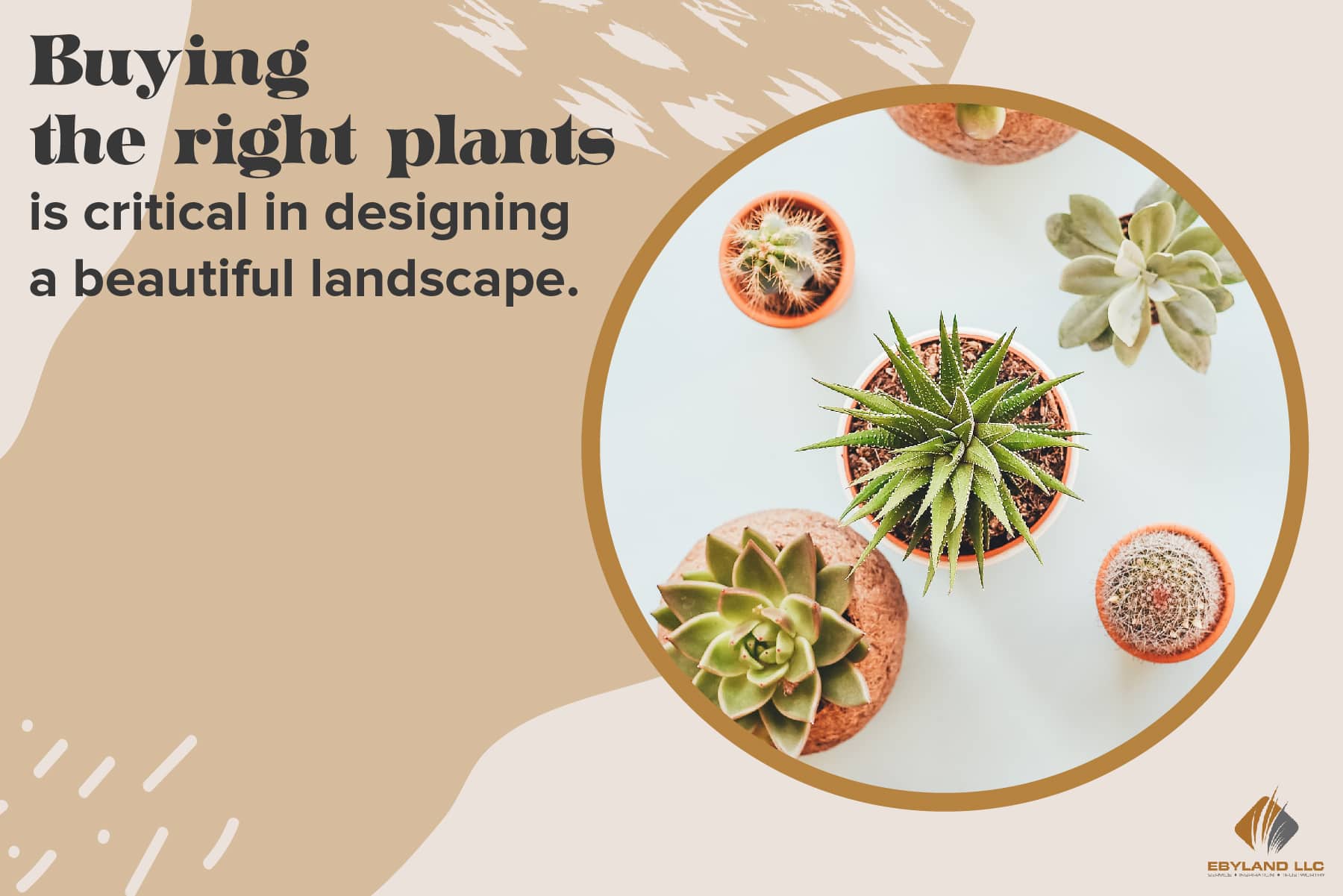
So, how can you ensure you are buying the right plants for your property?
Here are a few pointers to get you started.
First, you need to know the soil type you are working with. We recommend doing a soil test. To do this, dig several holes about a foot deep and collect a few tablespoons of dirt from each one.
You can send the soil to a testing lab or test it yourself with a soil test kit.
If your soil is deficient, you may need to help it out. We suggest adding organic matter like mulch and compost, worm castings, or manure as the best way to make your soil more loam-like and improve its structure.
You also need to understand the frost cycle of your geographic area - otherwise, you may try to establish your plants at the wrong times, and early or late frosts may kill them.
An excellent resource to check out is a plant hardiness map. Each area of the United States is given a "hardiness zone," each plant is given a recommendation for which zones it can be planted in.
Then, it's as simple as ensuring the plant you want to purchase can be grown in your hardiness zone.
Finally, make sure you are buying quality plants. We recommend buying from a trusted plant nursery where you'll be sure to receive quality plants that are already robust.
Once you finally have the right plants in hand, it's time to head outside and start transforming your property!
Add Variety With Garden Accessories And Other Landscape Materials
A few flower beds do not make up a well-designed landscape. Any well-designed landscape includes much more than that.
You should include larger plants like trees or tall shrubs on your property. These give your landscape a lot of interest and a natural focal point for designing island flower beds.
And while plants should make up most of your garden, don't forget about complimentary hardscapes that can take your property to the next level.
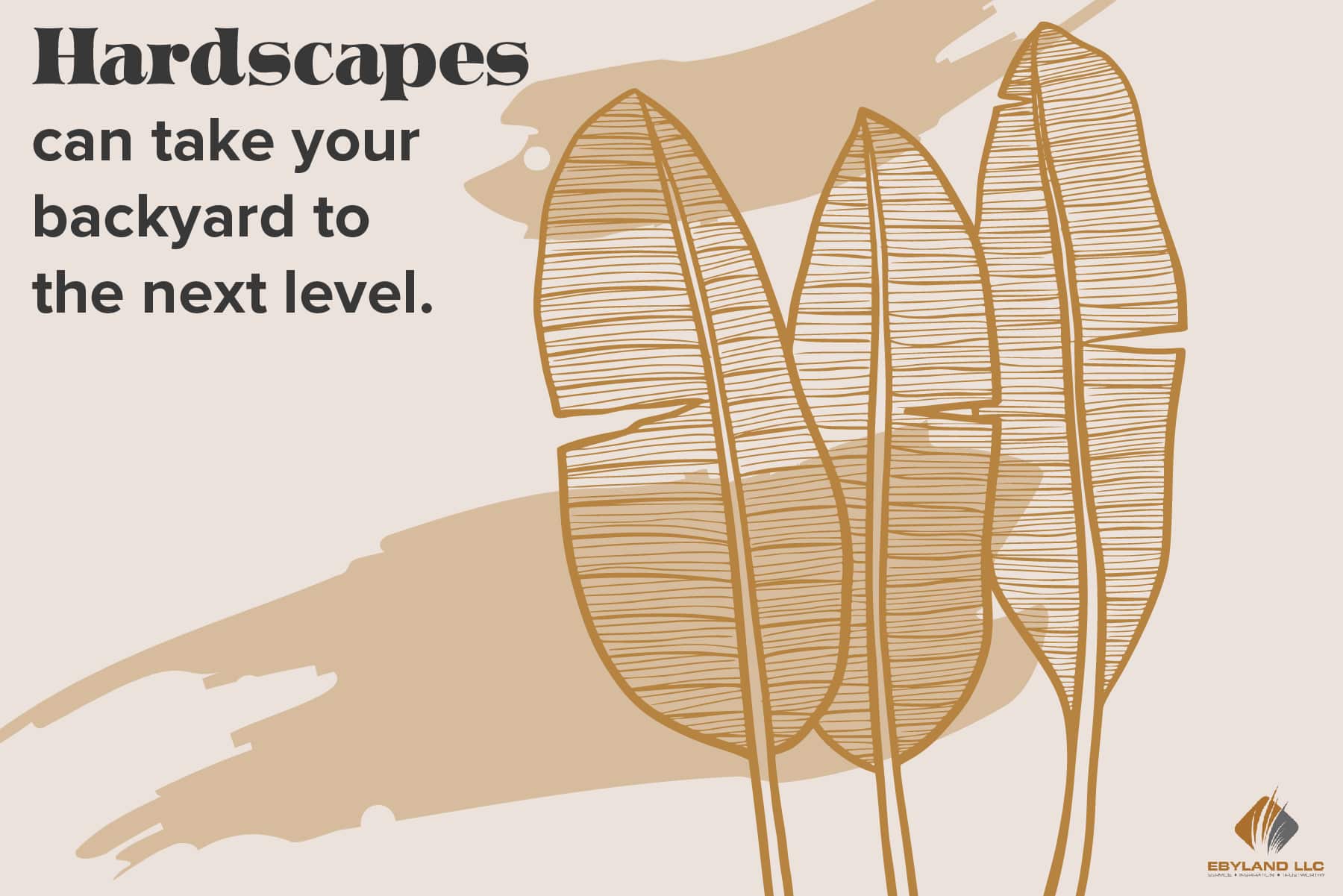
For example, you can use landscape pavers to create a whimsical path that begs to be explored or a patio that invites a serene evening of relaxation.
If you’re interested in incorporating hardscapes into your landscape, you may want to read our blog: Choosing The Best Hardscape Materials For Your Backyard (with pictures for inspiration).
Consider adding some smaller landscaping pieces to your scene as well.
For example, some quality outdoor furniture can add a touch of elegance and an intimate place to have a conversation in your backyard. A statue can add a little flair. Or, add a few natural boulders to make a natural-looking outcropping. Incorporating a fun outdoor playset is fantastic for younger guests—creative touches like this spice up a landscape design.
Your creativity is the only limit when adding creative touches to your landscape. Do you need some help coming up with good ideas? Here are some creative garden ideas.
Popular Garden Styles
Planning a perfectly unique landscape is a lot of fun! But sometimes, it’s ok to borrow ideas from other people. Sometimes, pointing to a picture is nice and saying, “I want my yard to look like that!” It at least helps get your inspiration juices flowing.
That’s why it’s important to familiarize yourself with some popular garden styles you could utilize.
Here are a few to get you started:
Tropical Garden

Experience those 'away on vacation' vibes daily by creating a luxurious tropical escape in your backyard. Tropical gardens are supposed to make you feel like you are in a lush rainforest.
A combination of large leafy plants and sculptural lower-level plantings like agave will have you nailing the look in no time!
Cottage Garden
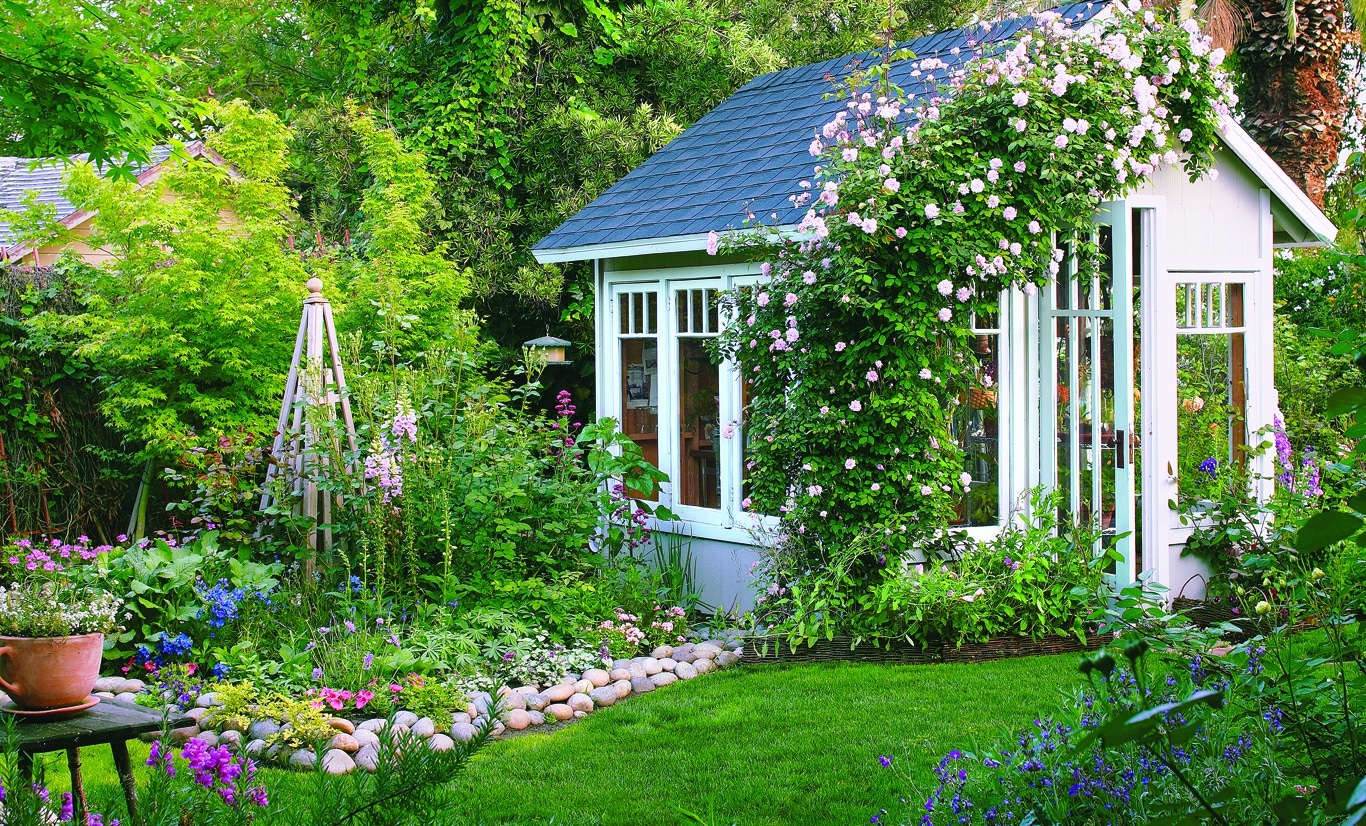
Cottage gardens are typically casually-informal residential properties that ignore conventional landscape tenets. Instead of spacious lawns and prim foundation plantings, there are lavishly planted flower gardens accented with rugged, native plants.
As such, they are the antithesis of ornamental manicured estate gardens. Instead, they are wild, bushy, and natural.
You'll find no mazes or artificial koi ponds here. Instead, you'll find densely planted flowers, climbing roses, and the fragrance of lavender in the air. You might even find some tomatoes, herbs, and other edible plants to put away for winter!
Add an herb garden, vegetable patch, and fruit tree, and you've got all the underpinnings of a charming cottage garden.
Woodland Garden

Woodland gardens take years to create from scratch, as the essential ingredient is a canopy of leaves provided by tall deciduous trees.
Of course, if you live on the edge of a wood, you already have the makings of a natural woodland garden.
Because woodland gardens are generally based around trees, they are typically shady and rely primarily on shade-loving plants.
And the dappled light that filters gently through the trees and creates patterns on the forest floor? It doesn't get much more beautiful than that!
Japanese Garden

When it comes to relaxing and clearing your head, Japanese gardens are at the head of the pack.
Water is found in many forms in Japanese Gardens - accumulating in ponds, running in streams, or tumbling down a cascade, its soothing notes creating a blissful ambiance.
Stones are also important in Japanese gardens, giving them personality and anchoring the many water features.
Contemporary Minimal Garden

A contemporary garden relies upon simple, clean lines to create a sleek but unique look. Think clean and modern.
The trick to nailing a contemporary minimal garden is to focus on foliage and texture rather than masses of flowers or vegetable plants. Plants are positioned to complement and echo the architectural features of the home rather than be the hero in their own right.
Conclusion
Creating the landscape of your dreams is accessible. You truly can do it!
With lots of planning and a commitment to taking care of your property, you will have guests oohing and aahing over your exquisite outdoor space.
Beyond that, you’ll have your own private oasis you can enjoy every single day.
If you’re planning your landscape design and are looking for high-quality plants in Cumberland, MD, or the surrounding area, then visit the plant nursery at Ebyland.
As a landscape and outdoor living supplier, we also offer products like landscape lighting and landscape supplies like compost, decorative stone, garden soil, and mulch.
Other materials we carry include:
- Stone
- Water gardens
- Outdoor playsets
- Outdoor furniture
- Hardscape materials
- Grills and Fire Pits
- And more!
We’re proud to offer years of experience and top-notch customer service. In fact, our goal is to make working with us incredibly easy. All you have to do is:
- Choose your products
- Pick up your products at our store or have them delivered to your home
- Enjoy your gorgeous property!
Contact us or visit our store today. We look forward to hearing from you!
